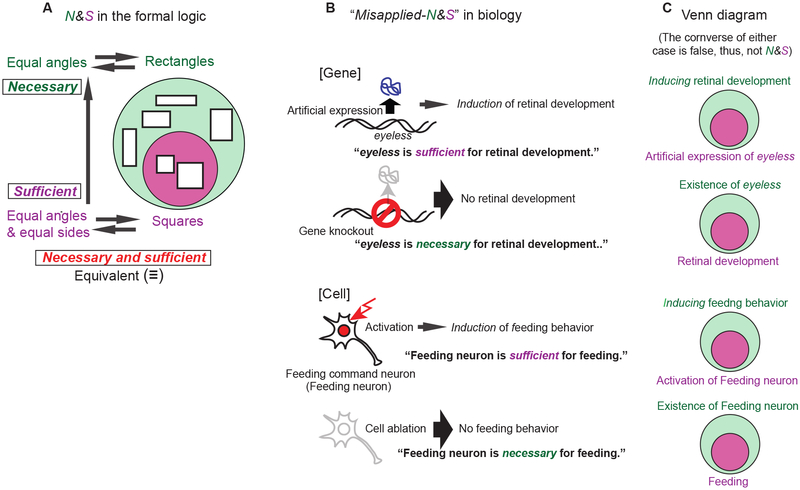Figure 1.
Schematic diagrams to compare the real necessary and sufficient in formal logic and “misapplied-necessary and sufficient” commonly used in biology. (A) The relationship between squares and rectangles as a typical example of true necessary (being a rectangle; pale green) and sufficient condition (being a square; magenta) in formal logic. See text. (B) Two representative examples in biology to show misapplied-necessary and sufficient commonly used in biology experiments. Top two schemes; experiments of retinal formation in developmental biology. Bottom two schemes; experiments of command neurons for feeding behavior (Flood et al., 2013b) in neuroethology. See text. (C) Interpretations of each experiment in B according to formal logic. Consistent with the example of the rectangle/square, sets corresponding to the necessary conditions are represented as the circle in pale green while sets corresponding to the sufficient conditions are represented as the smaller circle in magenta. Note that converses to each example are false. Thus, there is no real necessary and sufficient condition in any of the cases.

